When a sales order for a product is confirmed, Odoo 19 Purchase's Replenish on MTO (Make to Order) procurement method immediately creates a manufacturing order or purchase order. Instead of depending on pre-stocked inventory, this approach guarantees that goods are only purchased or manufactured in response to real client demand. It ensures traceability and precise fulfillment by establishing a direct connection between the sales order and the manufacturing or procurement process. By keeping inventory levels low, MTO assists companies in lowering carrying costs and overstocking. All things considered, it is perfect for businesses that deal with customized goods or things that aren't frequently held in stock.
- Lower Inventory Costs: By only buying or producing goods as needed, excess stock and storage costs are kept to a minimum.
- Better Cash Flow: Money is not invested in unsold inventory because products are ordered based on customer demand.
- Precise Order Fulfillment: Every production or purchase order is immediately connected to a particular sales order, which minimises mistakes and guarantees on-time delivery.
- Improved Traceability: Odoo gives complete visibility and control over the supply chain by tracking each stage, from supplier purchases to client orders.
- Customization Flexibility: Perfect for configurable or made-to-order items, this feature enables companies to effectively satisfy specific client needs.
This blog post will discuss how a user can use the Replenish on Order (MTO) capability to initiate a Manufacturing Order or Purchase Order. This feature makes sure that goods are only manufactured or purchased when a sales order has been verified. We'll go over how this automation contributes to the maintenance of ideal inventory levels. Let's now examine how Odoo 19 Purchase's recently added Replenish on Order (MTO) functionality operates.
For that lets enable the Replenish on Order (MTO) from the purchase settings. Click on the Configuration menu and select Settings. from the Logistics section enable the Replenish on Order (MTO) then save it.
: Configuration > Settings > Replenish on Order (MTO) > Save

Trigger Purchase Order using Replenish on Order (MTO)
Every time a sales order for a product is confirmed, a purchase order is automatically created in Odoo 19 Purchase thanks to the Replenish on Order (MTO) functionality. Instead than keeping surplus inventory, this strategy guarantees that products are bought directly from customers based on their needs. It assists companies in ensuring timely product availability, optimising stock levels, and streamlining their procurement process.
For that, let's check one product. The product is named ‘TABLE.’ Here, the products are not stocked inside the inventory, which means it is not available. While checking the smart tab, there is no Bill of Material created for this product.

Then check the Purchase tab. The purchase tab contains one vendor pricelist. Here, the vendor is Aka Foster, and the cost is set as 15000.

Then next is the Inventory tab. Enable the Replenish on Order (MTO) from there.
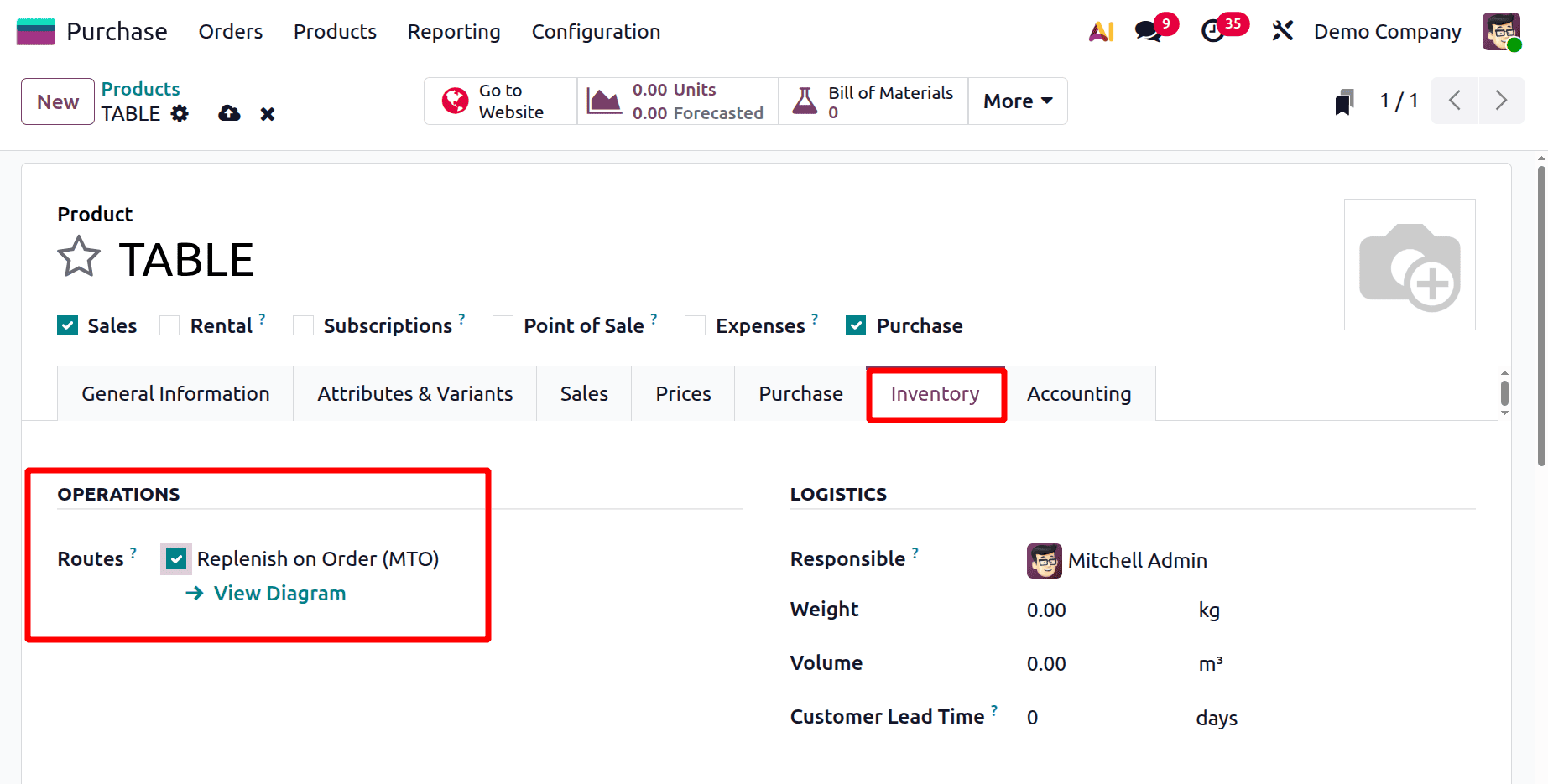
Save the product, then let's create a new sales order for the product TABLE.
For that, move to the sales module, then create a new quotation. Here, the customer wants 2 quantities of TABLE. Add the product inside the order line. So, Confirm the order.
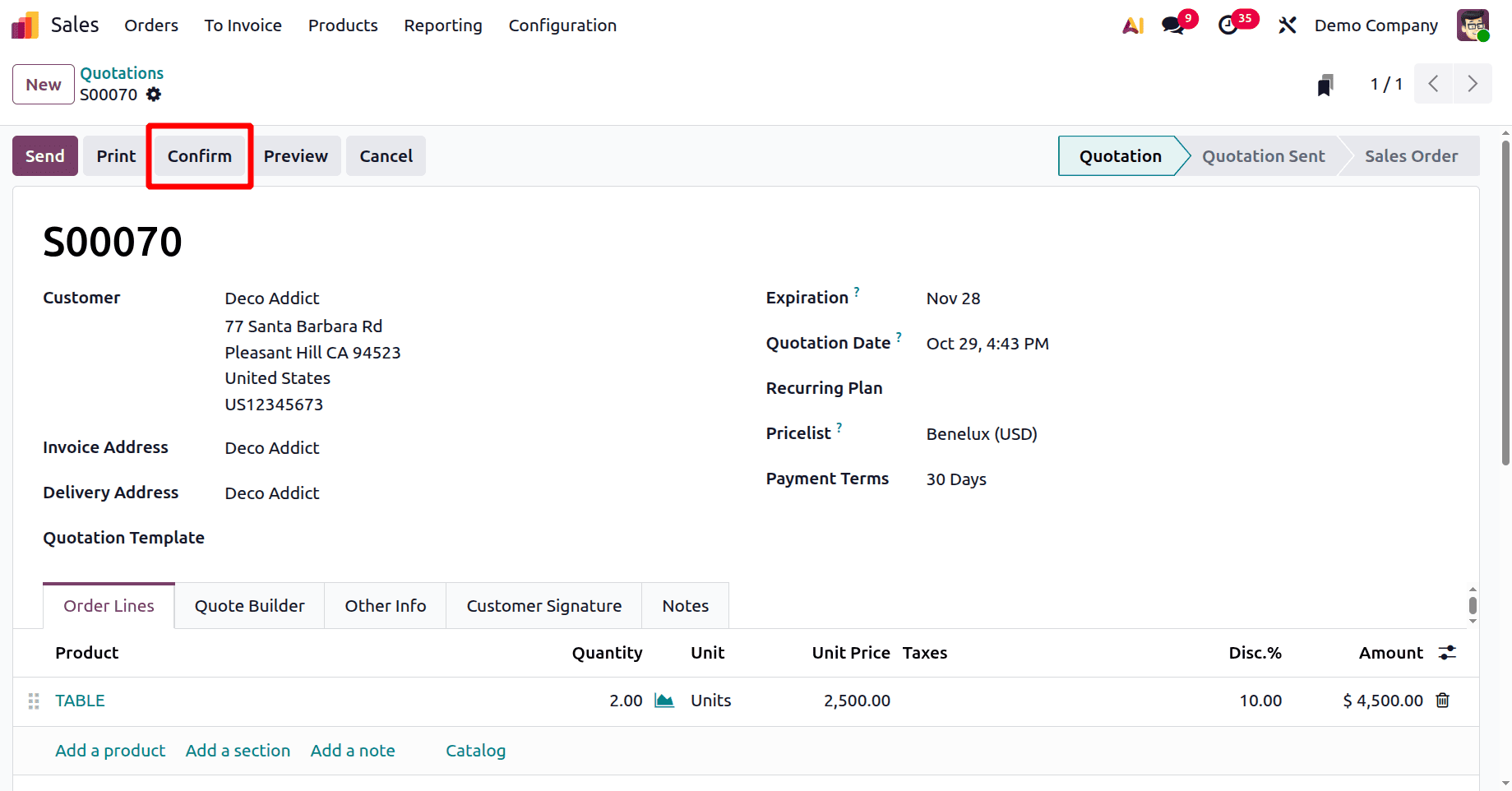
The product is not available. While confirming, two smart tabs show. One is Delivery, but the second one is Purchase Order.
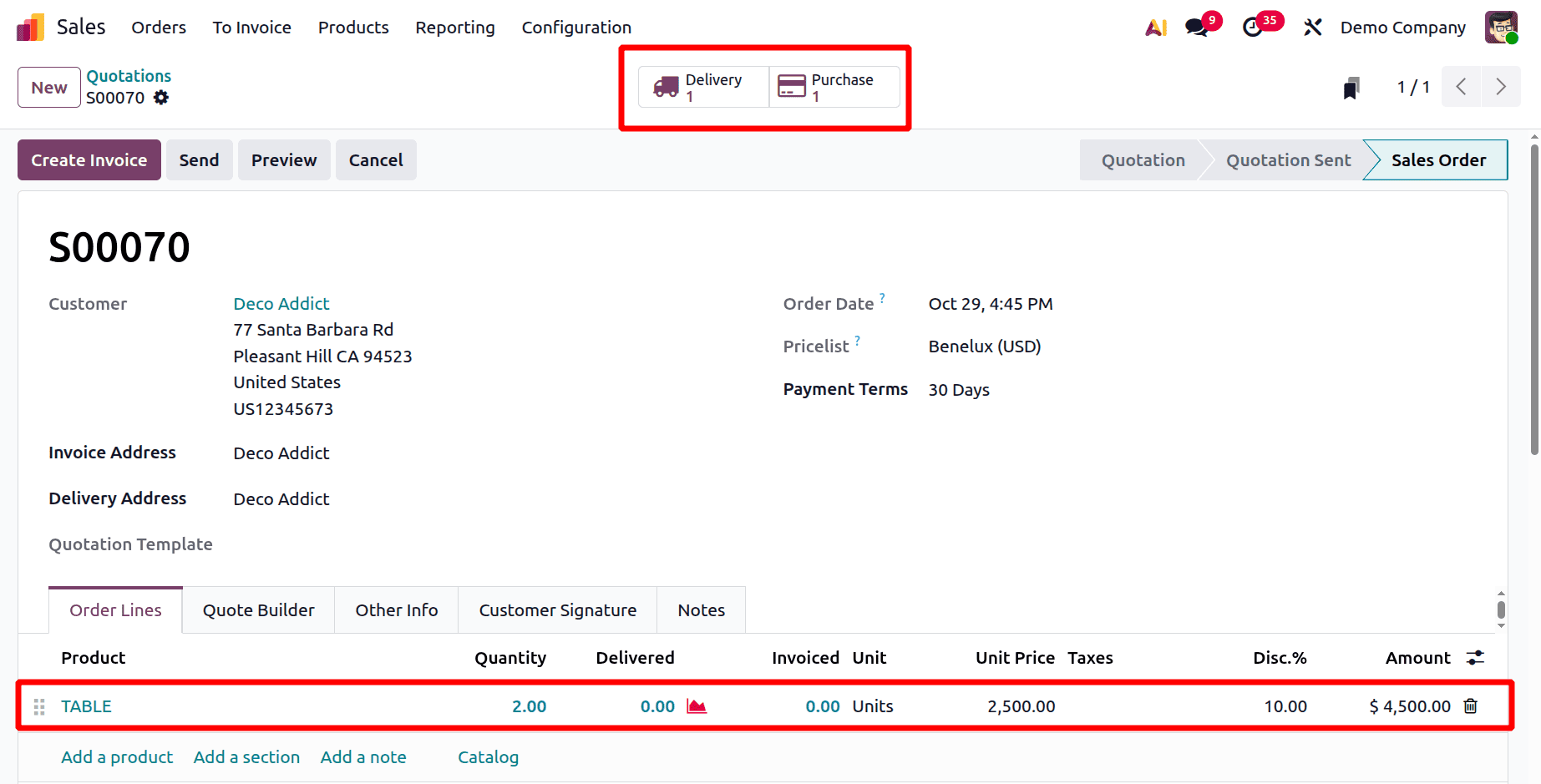
Before delivery, open the Purchase. Here, the Purchase order is triggered because of the Relish on Order (MTO). Open the purchase order. Confirm the order.
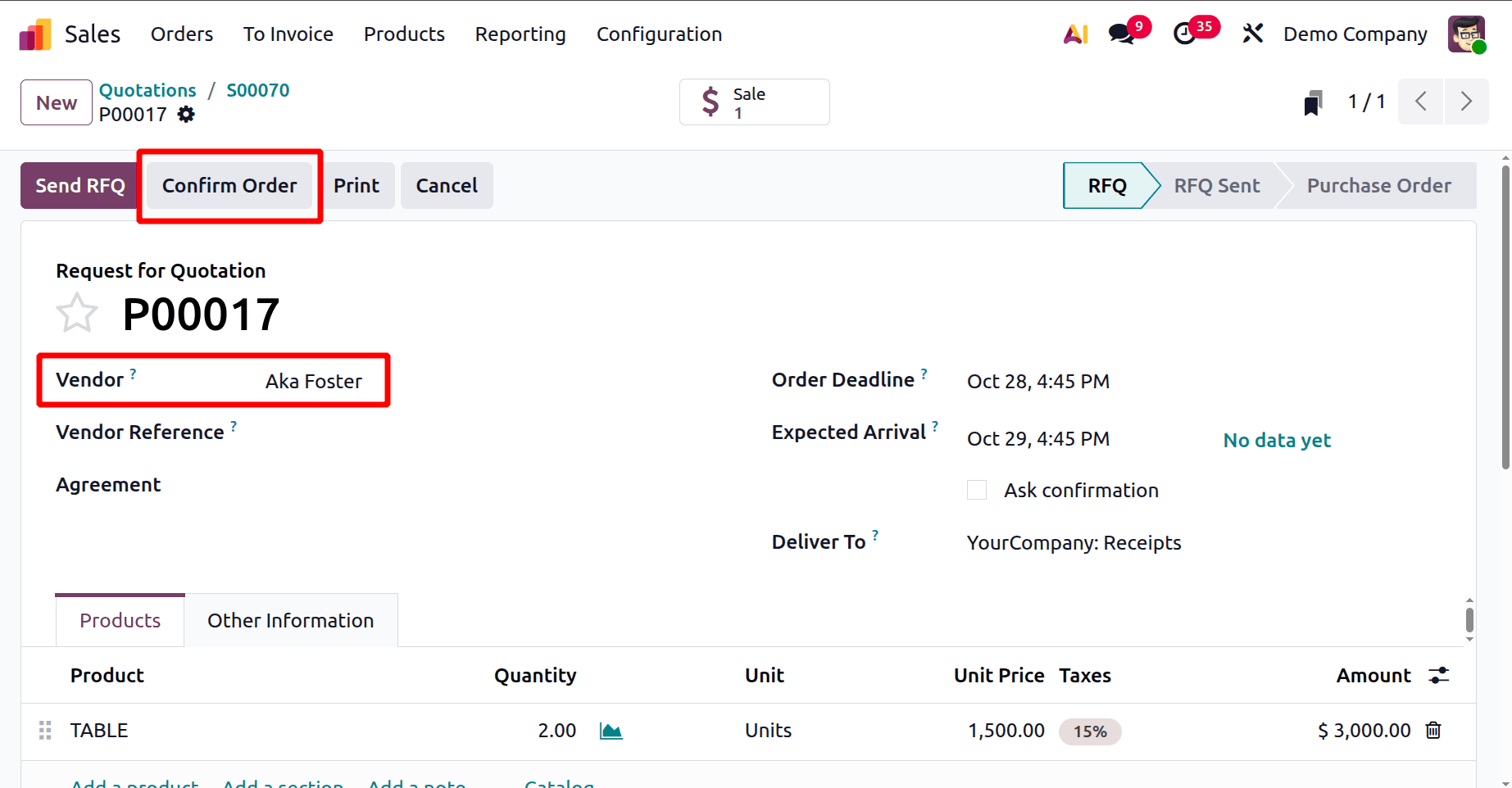
Then, complete the receipt by validating. Now the product has arrived in the company's stock.
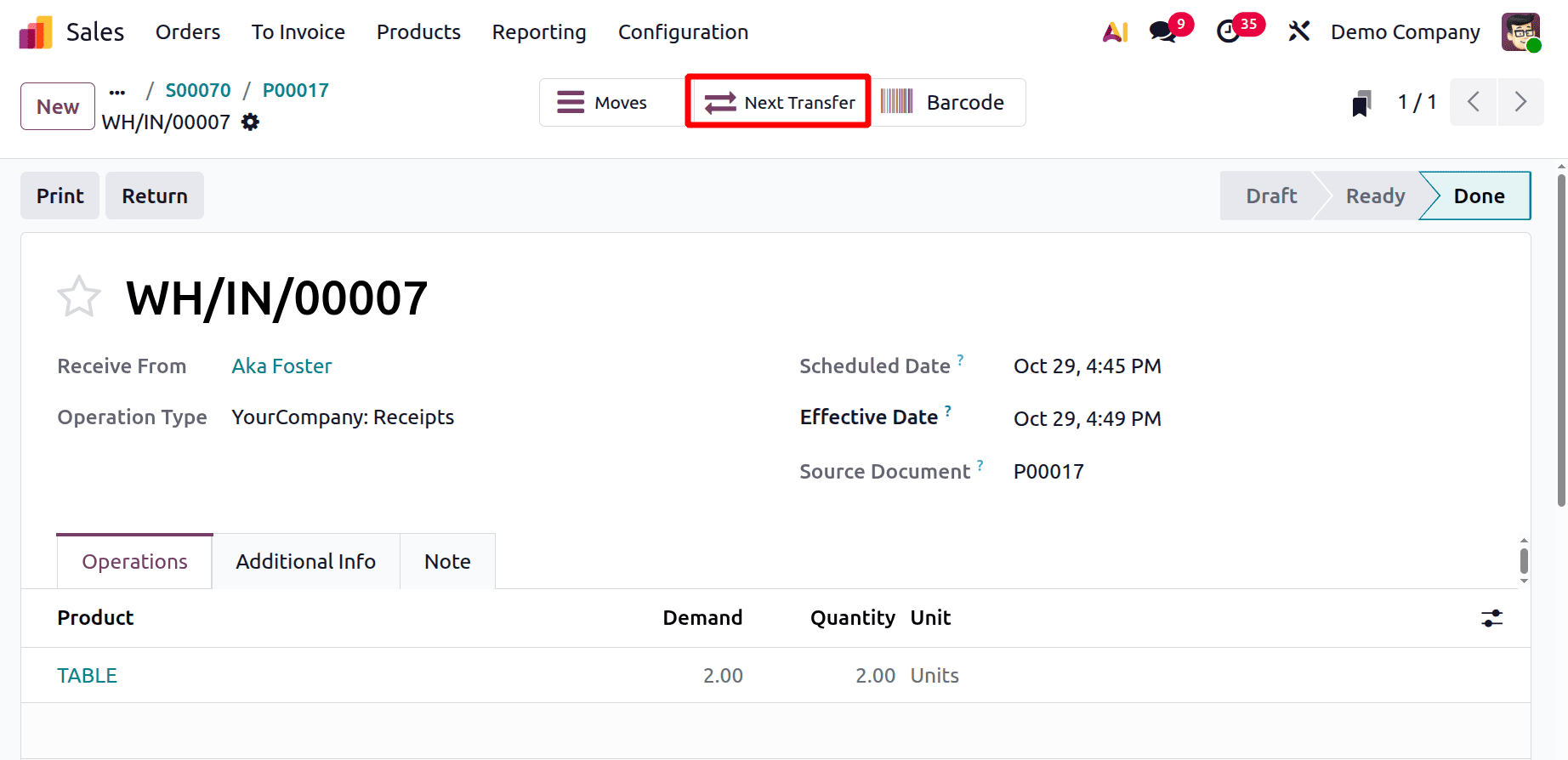
Either move back to the sale order and open the delivery, or click on the Next Transfer to get the Delivery. Here, the product is available now. Complete the delivery by validating.

Now the Delivery is also completed.
Trigger Manufacturing Order using Replenish on Order (MTO)
The Replenish on Order (MTO) feature in Odoo 19 Purchase enables companies to automatically initiate a Manufacturing Order each time a product is sold. This minimizes unnecessary stock levels by ensuring production begins only when there is real demand. It is a productive method of coordinating production with client orders, enhancing productivity and resource use.
So let's open the same product ‘TABLE’ again. There, still the on-hand quantity is zero. There is a smart tab named Bill of Materials.

When we check the smart tab, currently, there is no BoM created. So click on the New button to add a new one.
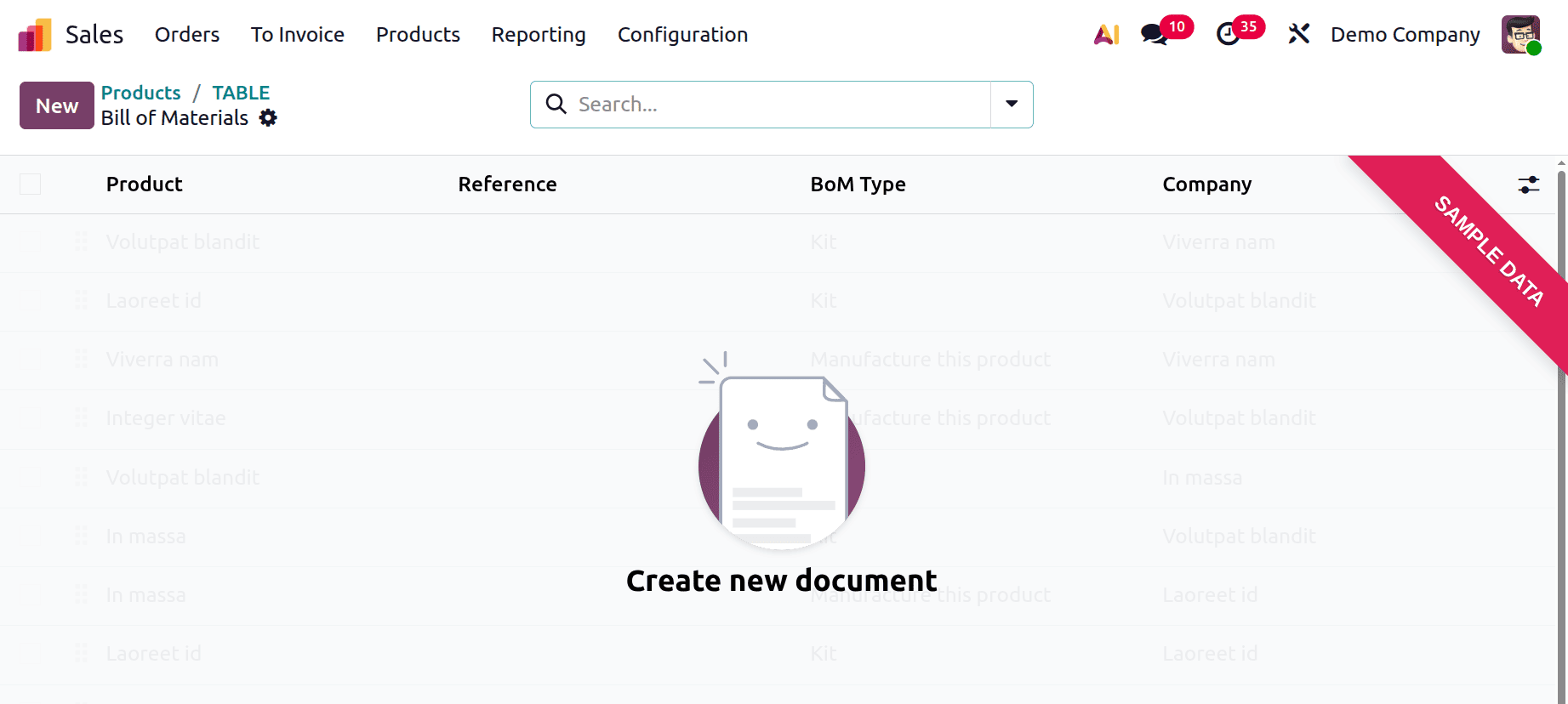
Then the BOM type manufactures this product. Inside the Components tab add the necessary raw materials.

Then the next tab is Operation. Add the operation needed to perform during the production of this TABLE.

Then save the BoM. and move back to the product page. Here, the other settings remain the same. But we can see the newly added Bill of Materials.

Then again, create a new sale order for the product. This time too, the quantity inside the orderline is the same two quantities. Click on the confirm button.

As same as the previous case, two smart tabs were created. But for a change, this time the second smart tab is Manufacturing.
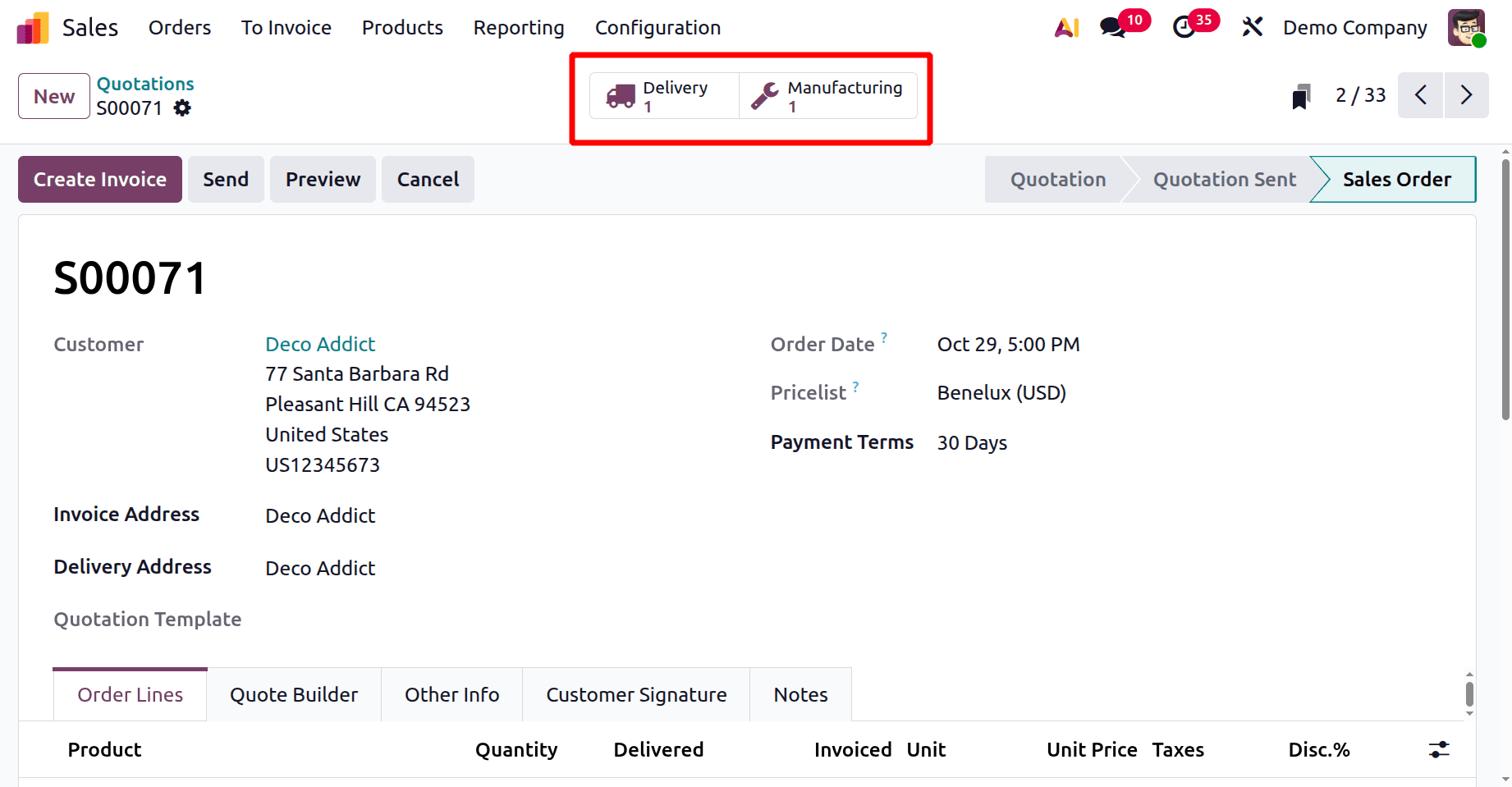
So open the manufacturing order. The components and operations added inside the Bill of Materials are shown. Plan the order, then start the operation.
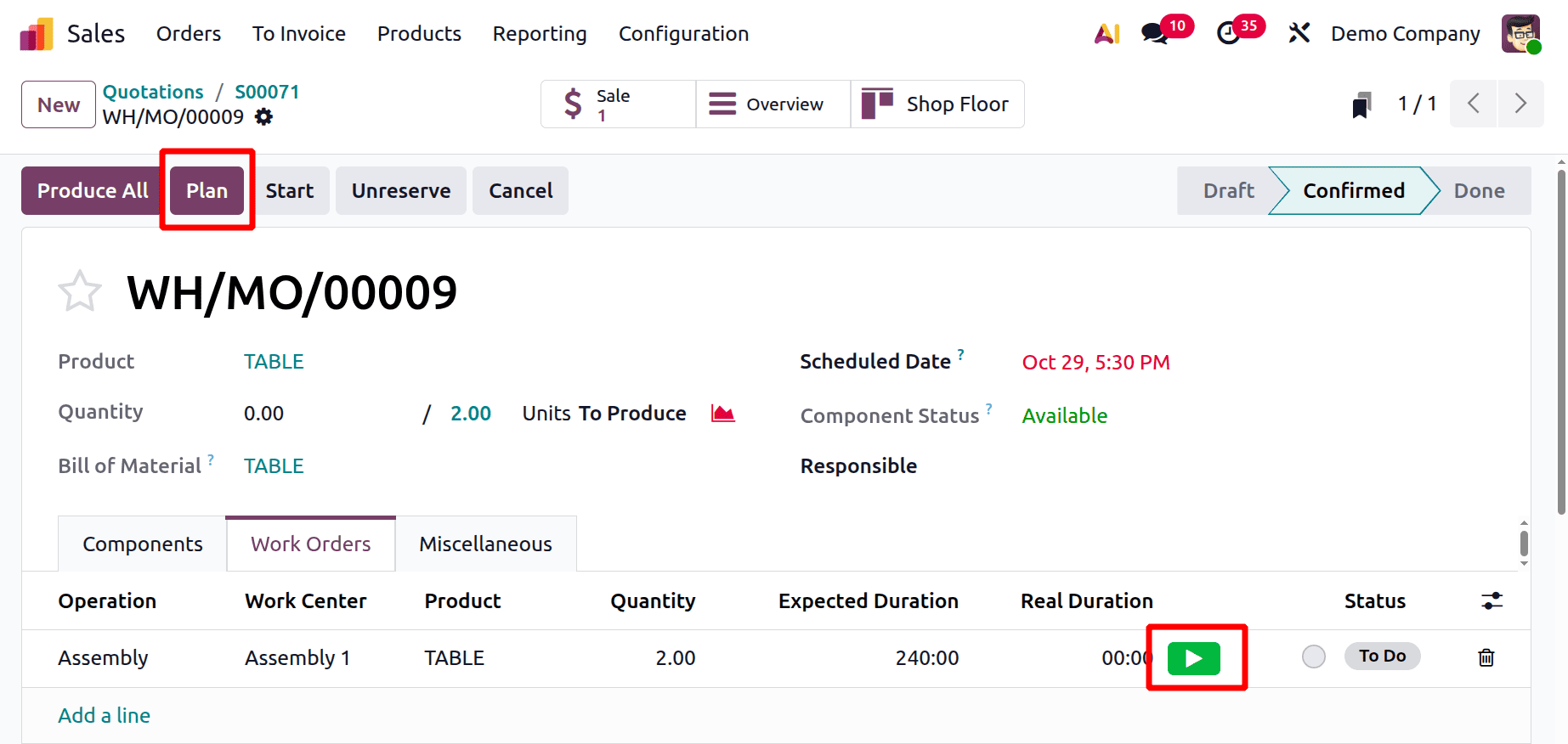
After completing the production, click on the Produce All button.

Then move back to the sale order, and then open the delivery. The product is now available. Validate the delivery.
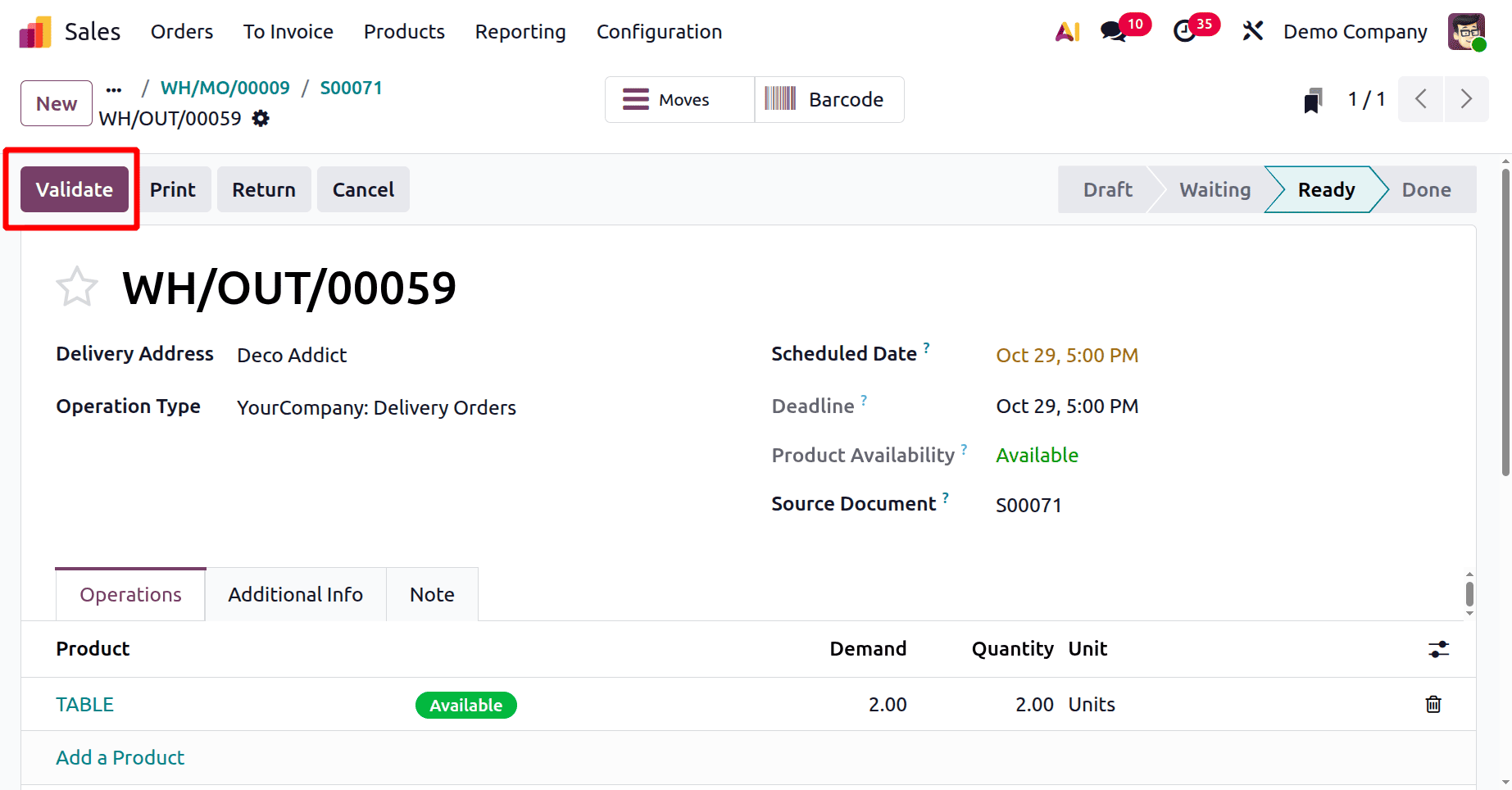
Here is the conclusion that Odoo 19 is the easiest way to use the Replenish on Order (MTO) route. From the settings, users can easily enable the route. Odoo 19 initiates a production order for restocking if the product is a manufactured product (has a bill of materials). If not, issue a purchase order.
To read more about How to Handle Reception Reports in Odoo 18 for Purchase, refer to our blog How to Handle Reception Reports in Odoo 18 for Purchase.